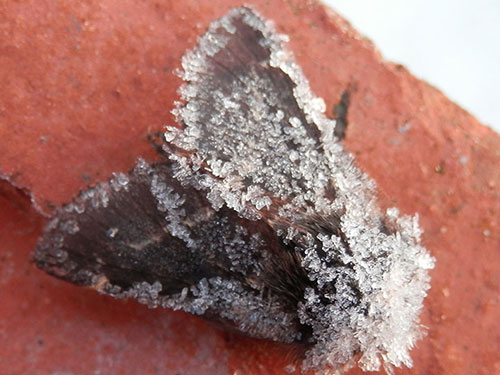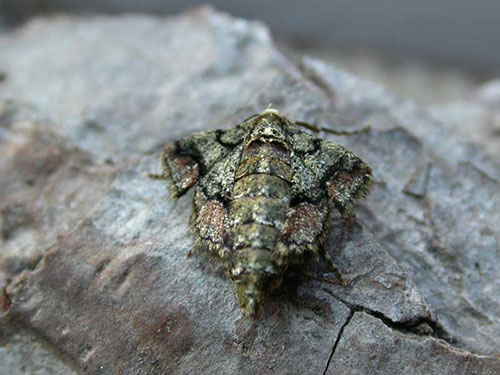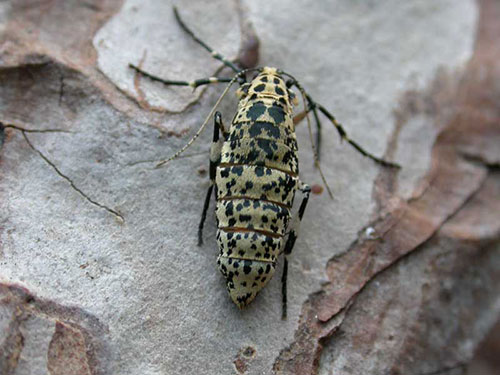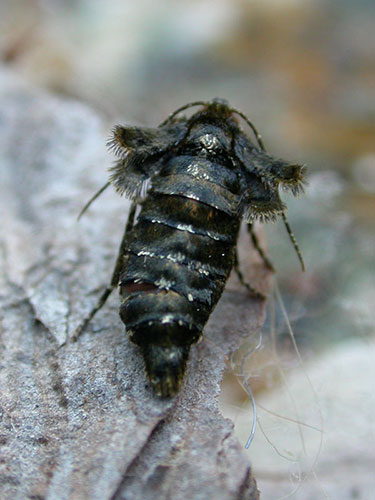


December Moth Poecilocampa populi - well adapted to cold weather!
Photo: Charles Waters

Partially apterous female Dotted Border Agriopis marginaria
Photo: Keith Alexander

Female Mottled Umber Erannis defoliaria - almost completely wingless
Photo: Keith Alexander

Female Scarce Umber Agriopis aurantiaria showing very vestigial wings
For many, the only encounter with moths at this time of year is the sight of one or two caught in the headlights when driving at night, usually when passing under the canopy of a patch of woodland. Many regular moth recorders will put away their traps in the autumn as the number of moths and the total species that they are trapping starts to tail off, they will not re-emerge until the weather warms the following spring. Of the 2,425* species listed in the UK moth checklist 1,912 have been recorded in East and West Sussex. It will surely come as no surprise that mid-summer is the peak flight period for adult moths with 1,390 species having been recorded in July and that winter represents the low point in the calendar. January is the month of least moth activity but nevertheless, 107 species have been recorded. Coming a close eleventh is December with 133 species reported. Many of these mid-winter species are single brooded and will only be seen at this time of year. A notable exception is the tortricid, Light Brown Apple Moth Epiphyas postvittana, an adventive colonist that arrived in the UK from Australia some time in the 1930s - polyphagous, hugely abundant and continuously brooded this moth has been recorded in Sussex on almost every day of the year. Other moths frequently recorded at this time of year, such as Chestnut Conistra vaccinii (and its congeners), Satellite Eupsilia transversa and Herald Scoliopteryx libatrix, among others, first appear in late summer or autumn and will, after a period of diapause, reappear in the spring. Of the moths that are adults only at this time of year one of the most abundant is the aptly named December Moth Poecilocampa populi, it is regularly seen in moth traps, sometimes in very large numbers, but is rarely encountered otherwise.
December also marks the start of the season of apterous females. The flight seasons of moths such as the extremely abundant Winter Moth Operophtera brumata, Northern Winter Moth Operophtera fagata, Mottled Umber Erannis defoliaria, Scarce Umber Agriopis aurantiaria, and Dotted Border Agriopis marginaria are either well underway or just beginning this month. While many are familiar with the males of these species the females are far less frequently observed. This is because they are wingless or partially wingless and can only be found by searching in woodlands, on the trunks of broadleaf trees (upon which the larvae of all these species feed), usually towards the base, with the best time to find them being early in the morning. All of these moths are woodland specialists and it appears that flightlessness has evolved in order to optimise energy use for egg production at the expense of flight which will be impaired and is energetically expensive in the low temperatures at this time of year. The structure of their woodland habitat facilitates species dispersal and allows for adaptation to variations in the timing of bud-burst through larval ballooning. By climbing a tree trunk after emerging from the pupa, the female moths maximise the diffusion of pheromones and thereby increase the probability of being located by the winged males.
As spring progresses a few other species with apterous females start to appear but by about May their flight periods are largely over. There are a few summer species whose apterous females, most notably Vapourer Orgyia antiqua and members of the Psychidae, two of which are not only wingless but legless as well (Pachythelia villosella and Acanthopsyche atra). These psychids mimic a maggot in order to be predated by a bird or reptile. Their eggs are able to withstand the bird’s digestive system, “passed through” and are consequently dispersed in its faeces. Neither of these Red Data Book species has unquestionably been recorded from Sussex but have been on the lowland heaths of Dorset and Hampshire.
Records of all moths and especially moths observed in the winter months are very welcome, pleas send them via iRecord. Good quality photos of the apterous females are also very welcome on the Sussex Moth Group website.
*Give or take a few
Every month it is our aim to highlight a species that is “in-season” and, although not necessarily rare or difficult to identify, has been highlighted by our local recording groups as being somewhat under-recorded and for which new records would therefore be welcomed.
If you or your recording group are aware of species such as this then please contact Bob Foreman.